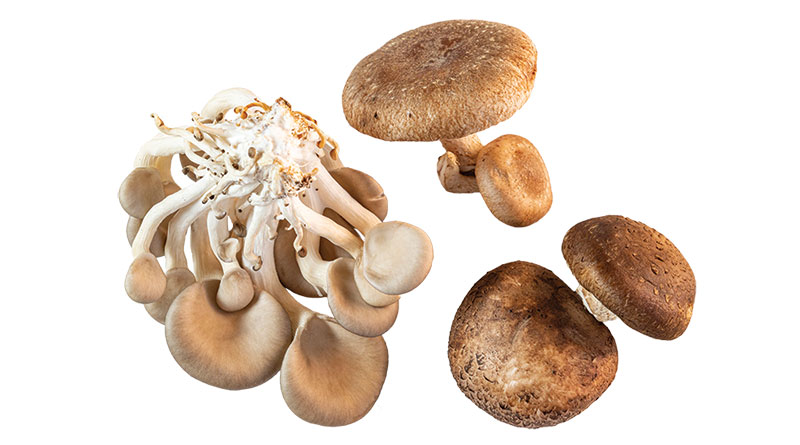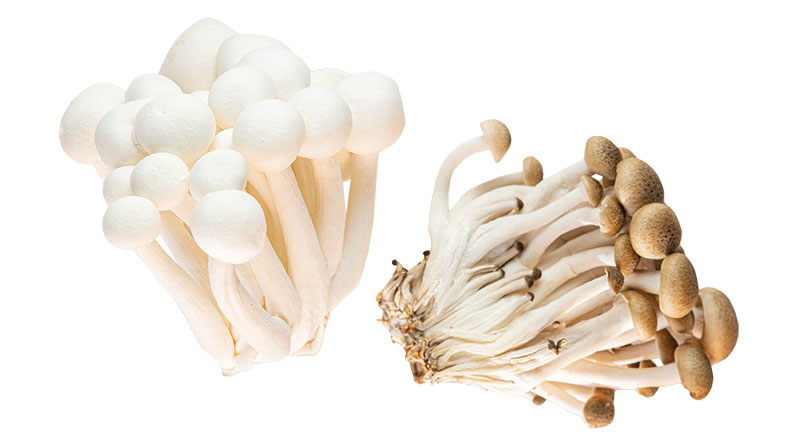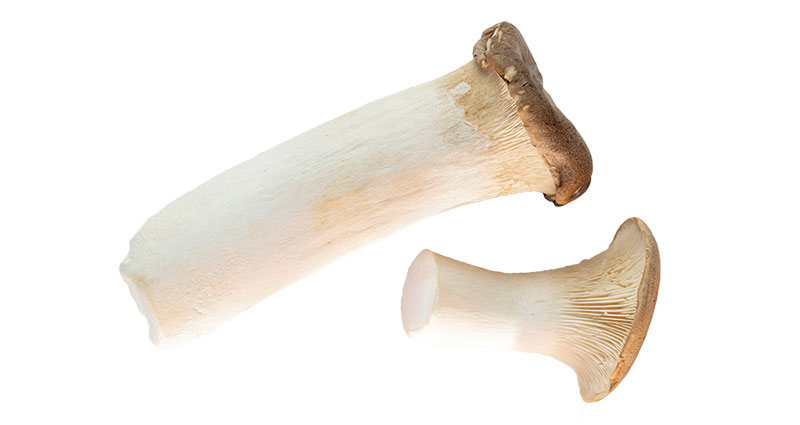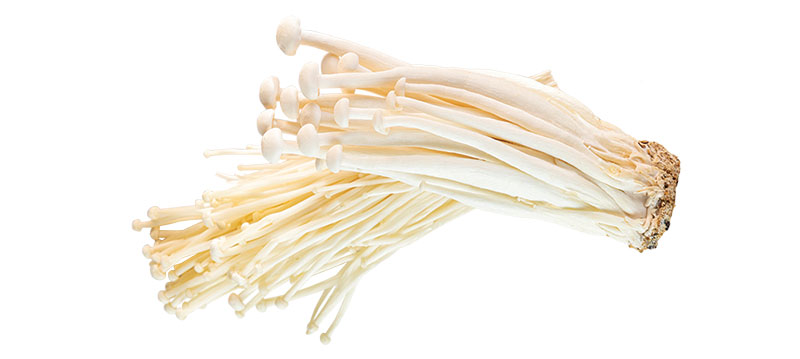
I love the idea of foraging for mushrooms. Traipsing through the woods on a warm spring day after a rain, happening upon armloads of earthy morel mushrooms. Imagining pan-fried crispy fried treats, or perhaps roasted quail practically exploding with morel and cornbread stuffing, maybe a creamy morel risotto—oh, the possibilities. In reality, I’ve never had any luck at it. And it takes time. Last year during the pandemic spring when I had more free time than I could ever have imagined, I managed to find a snake warming itself in a sunny spot and a few ticks. I also found a fallen windmill. An Italian friend who was foraging with me found a funnel—Italians, by the way, love looking for mushrooms and other wild edibles their country is blessed with. But not a single morel—so we had to settle for a patch of stinging nettles as a consolation prize. Delicious though they may be, nettles are not morels.
If you don’t feel up to foraging this spring, sometimes you can luck onto them at a farmers market or roadside stand. This recipe doesn’t require morels. They would be nice in it, either just a few mixed with other mushrooms, or if you hit the jackpot, the whole quantity called for. But any good mushrooms result in a tasty outcome, regardless of the amount and type of foraging required.
Mushroom Tartlets
The dough for this recipe is a delicious and simple one I learned from a chef from Gorizia, Italy, on the Slovenian border nearly 20 years ago. The recipe has the good fortune of being impossible to forget. It is simply equal weights of flour, butter, and ricotta cheese and can be made as large or small as needed. For a home-size recipe, enough to make about 12 tartlets (or one large double-crusted tart), combine 1/2 pound each of all-purpose flour, room temperature butter, and ricotta (drained of excess water if you have the time—if the cheese isn’t drained, you may have to add a bit more flour because the dough will be very sticky. For a more American but equally successful version, cream cheese may be used in place of the ricotta.) Add 1 teaspoon salt and mix by hand or in a stand mixer with the paddle, just until the dough comes together. Pat the dough into a disc and wrap it in plastic and chill while you make the mushroom filling.
For the filling, prepare the mushrooms by first cleaning them. A half to ¾ pound of mushrooms will be enough for this size dough recipe. A good rinse will do for most varieties, but morels and other foraged mushrooms will need to be cut in half and soaked in a bowl of well-salted water for a few minutes to chase out any critters that may reside within. Drain, rinse, and pat dry the mushrooms with a towel, then slice them. If you would like to give cultivated mushrooms a bit more complexity, a few pieces of dried morel or porcini mushrooms can be included, just be sure to soak them briefly in warm water to rehydrate them and rinse away any grit. Begin by sauteing one small-to-medium diced onion, a diced shallot (optional but delicious), and a clove or three of chopped garlic in butter. After a few minutes, when the onions turn translucent, add the mushrooms, stirring occasionally, but allowing them to stick and lightly brown. Sprinkle lightly with salt. Add a tablespoon or so of a chopped fresh herb of your choice, such as sage, rosemary, thyme, or a combination, and continue cooking for about 10 minutes. Covering the pan will help the mushrooms and onions release their liquid, but be sure to uncover the pan for the last few minutes of cooking to evaporate the water, maximize caramelization, and concentrate the flavors. Taste a mushroom to be sure that it is delicious, adjusting the salt if necessary. Turn the mushrooms out into a bowl and allow them to cool for a few minutes. Add about one cup of a cheese you love, preferably a melty one, like Fontina or Muenster, but just about any cheese will get along well with mushrooms—one of those truffled cheeses that are popular right now could be amazing. If you have it, a bit of finely chopped fresh chives or parsley would be a welcome addition at this point, but not absolutely necessary. Stir the mixture to combine thoroughly.
Lightly flour a board and roll the dough into a large square or rectangle to about an eighth-of-an-inch thickness for making tartlets. This dough is extremely forgiving and can be rerolled as needed. Cut the dough into about 12 squares and place a responsibly sized dollop of filling on each one. (If you have excess filling, eat it with a spoon or spread it on toast the following day for breakfast.) Fold each square corner to corner and seal the edges. It might help to seal the edge with a dab of water or egg wash if they don’t want to seal. Crimping the edges with a fork also helps and it looks nice, too. Brush the tartlets with a bit of egg wash or cream and bake in a 350F oven for about 25 minutes or until the pastry is a lovely deep golden brown and a bit of the filling may be oozing out of a tartlet or two. Allow to cool briefly before serving. They also reheat beautifully if you would like to serve them a bit later, just make sure they get hot all the way through. For one large tart, divide the dough into two pieces and roll each out to a circle—you can figure out the rest. Serve topped with spring greens for a satisfying meal any time of the day.
In Your Pantry
Grocery Store Wild
If forest and field aren’t feasible for foraging your own wild mushrooms (not to mention the knowledge of which mushrooms are suitable to eat—some delicious looking mushrooms can be quite deadly!) and white button mushrooms seem a tad too tame today, take a walk on the wild side at a good grocery store and give some of the cultivated “wild” mushrooms a try. Whole Foods and other gourmet grocers, health food stores, and ethnic markets—especially Asian ones—are a great place to explore. For the freshest mushrooms possible, check the internet for kits for growing your own at home.

The Usual Suspects
Shiitake, oyster, and cremini mushrooms are staples in restaurant kitchens and should be in your kitchen as well. Cremini (AKA brown button AKA Baby Bellas, as in small portabella mushrooms—a clever marketing ploy) have a more intense mushroom flavor than their common white-button counterpart and are delicious raw or cooked. Oyster mushrooms are especially lovely grilled or roasted. Shiitake are the sturdiest and have a more substantial texture. Their stems are tough and should be removed before cooking—but save them to add to stock or broth for their valuable umami addition. While all are good by themselves, in combination they have a more complex “wild” flavor.

Beech Mushrooms
Grown on beech-wood shavings, two strains, the White Alba Clamshell mushroom and Brown Clamshell are now widely available in our markets. They respond best to simple preparations that let their charming appearance and lightly crunchy texture shine. Their flavors are essentially indistinguishable and both caramelize beautifully in the skillet or oven. Good in lighter woodsy pasta sauces and with poultry.

King Oyster/Royal Trumpet
These oyster mushrooms on steroids are simply different names for different sizes of the same mushroom—but nothing like the ordinary oyster mushroom. The elegantly shaped Royal Trumpet is nutty and sweet, and thinly sliced can be sauteed quite successfully, especially with other vegetables. The King Oyster is sturdy enough to survive any cooking technique, regardless of duration (which makes them an excellent choice for long braises), any type of seasoning, and can be cut either lengthwise into slabs, or crosswise into medallions before cooking. And although those medallions may look like scallops (they are frequently called vegan scallops on Instagram), they bear no resemblance in flavor or texture.

Enoki
Depending on size, these threadlike fungi are known as either enoki (the skinniest) or seafood mushroom (slightly larger, but identical in appearance). They are delicately flavored, mildly sweet, and are most frequently used raw in salads or as a garnish added to light soups at the last moments of cooking. Only the base is trimmed and discarded—the rest of the long-stemmed mushroom is eaten. Enoki can be used quite successfully as part of the filling in various wraps, or quickly sauteed in clumps (not separated at the base) in which case they have the texture of finespun, earthy noodles.


